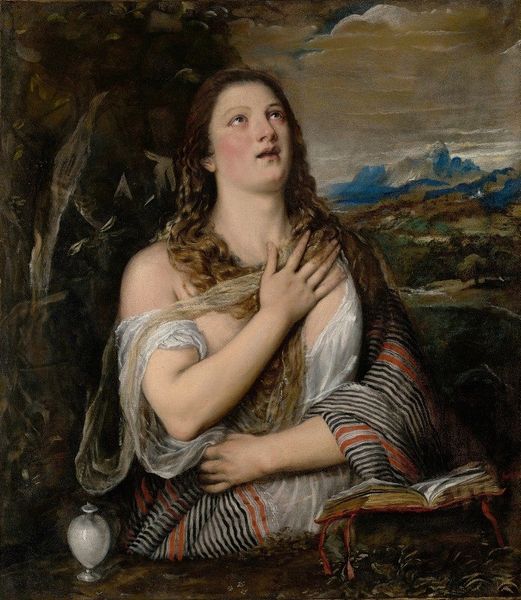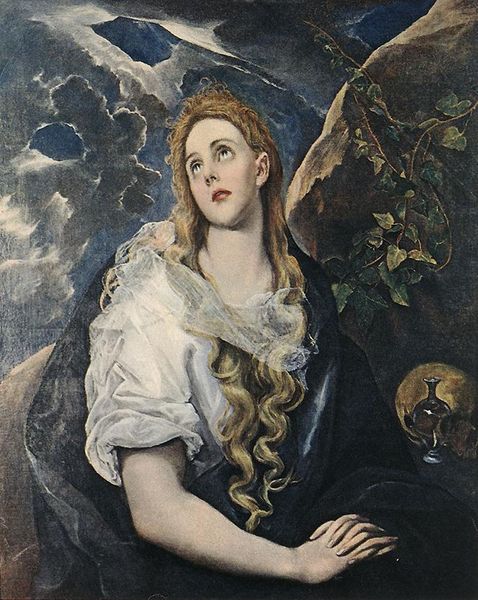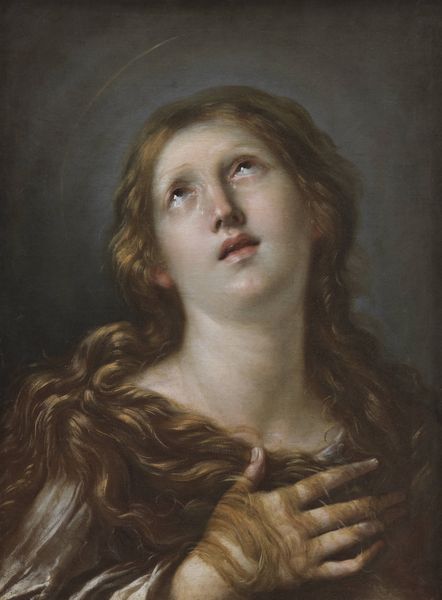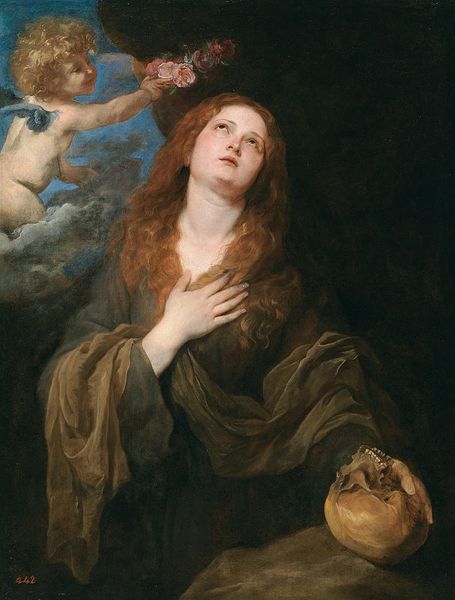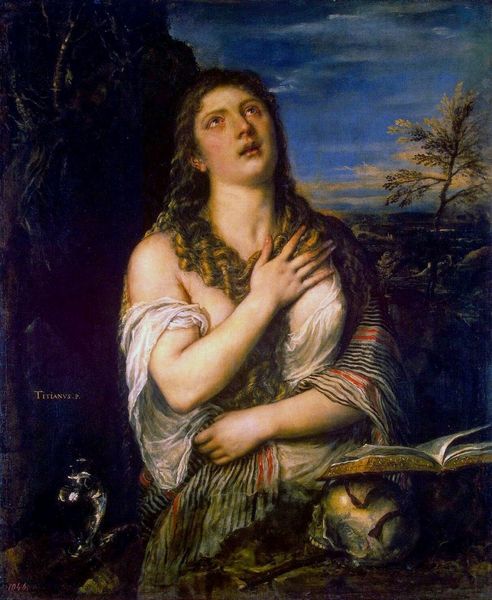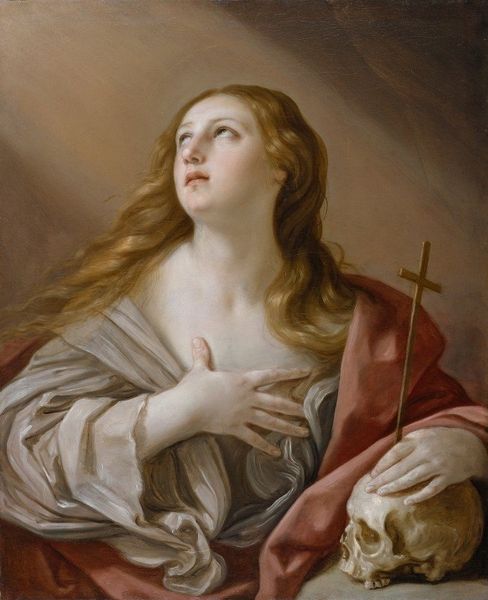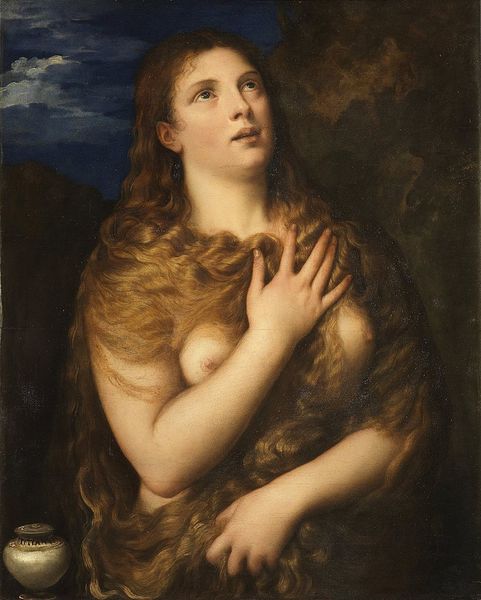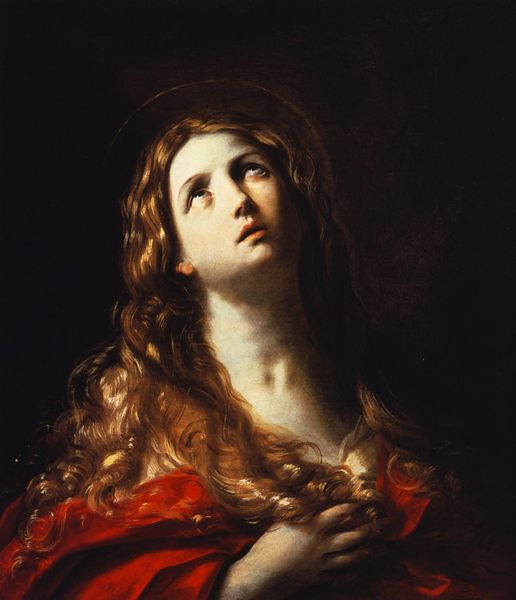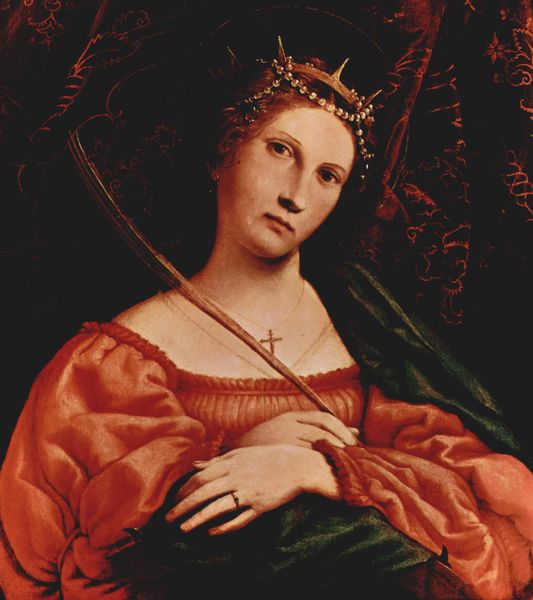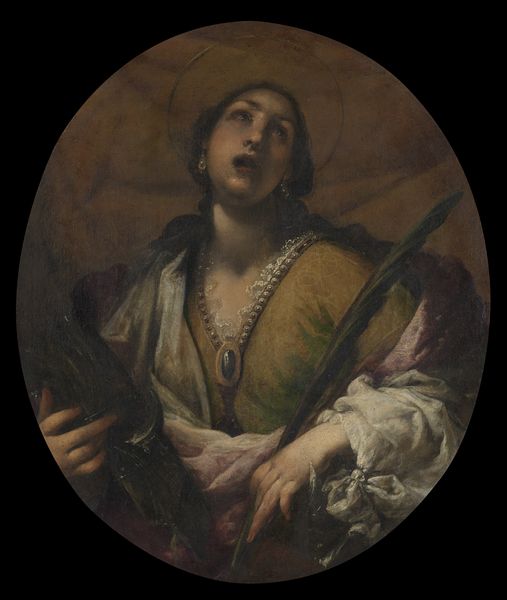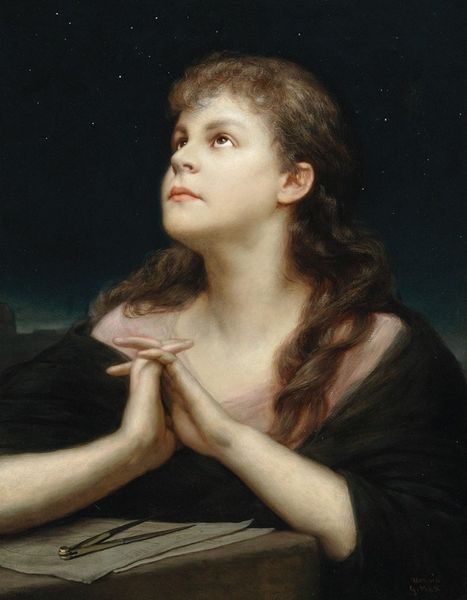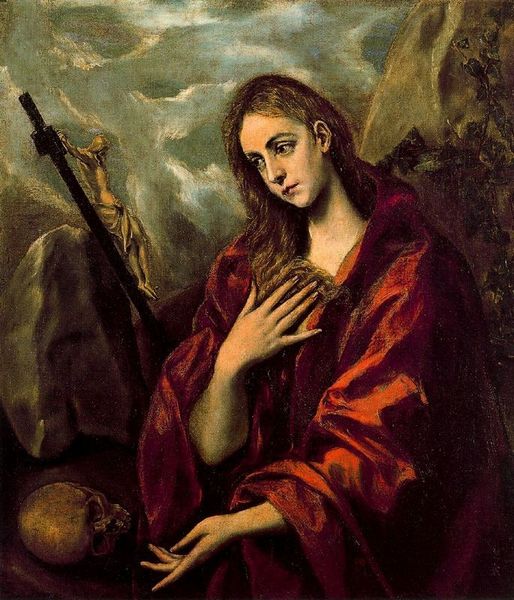
oil-paint
#
portrait
#
allegory
#
oil-paint
#
mannerism
#
oil painting
#
christianity
#
history-painting
Dimensions: 86.4 x 67.3 cm
Copyright: Public domain
Curator: Standing before us is "The Penitent Magdalene," an oil painting rendered around 1578 by El Greco. Editor: There's an immediate sense of upward longing; the gaze, the elongated fingers all lift the eye. I am also struck by how dark the color palette feels, like a painting done under the shadow of remorse. Curator: El Greco's mannerist style certainly amplifies the emotional intensity, doesn't it? Considering its creation, one must reflect upon the sociopolitical climate of late 16th century Spain, particularly the prevailing currents of religious reformation and the impact such transformations might impose on workshop organization and the acquisition of particular pigments, like the lapis used for the intense background shadows Editor: Indeed, the choice of the Magdalene is powerful given the religious context; she embodies both sensuality and repentance, reflecting inner conflict and divine grace. Observe the skull and the ointment jar; constant reminders of mortality and former life that anchor her spiritual transformation. Curator: Yes, these familiar symbols carry potent significance. One also has to recognize that during El Greco’s period in Venice, these sorts of pieces were intended for private devotion. If one examines similar works across El Greco’s artistic production during this time period, one finds repeated use of materials, compositions and similar modeling processes. Editor: That explains why certain motifs reappear! I’m fascinated by how her gaze is directed towards the heavens, emphasizing spiritual ascent. The face seems caught between grief and serenity. There's a visual dialogue happening. Curator: I think your idea is very sound because, for an audience conditioned to seeing repeated imagery, it serves to amplify not only El Greco’s individual skill and artistry, but also emphasizes his economic resourcefulness! It seems to me that one needs to focus equally on symbolism and also studio management and production practice of that period. Editor: Reflecting on this piece, I’m left pondering how universal themes of sin, redemption, and devotion can manifest through such potent imagery. The history that this painting captures is truly incredible. Curator: Exactly! When considering works of art we must never forget their value as not merely symbols, but material constructions created and sustained in workshops driven by financial reality.
Comments
No comments
Be the first to comment and join the conversation on the ultimate creative platform.
